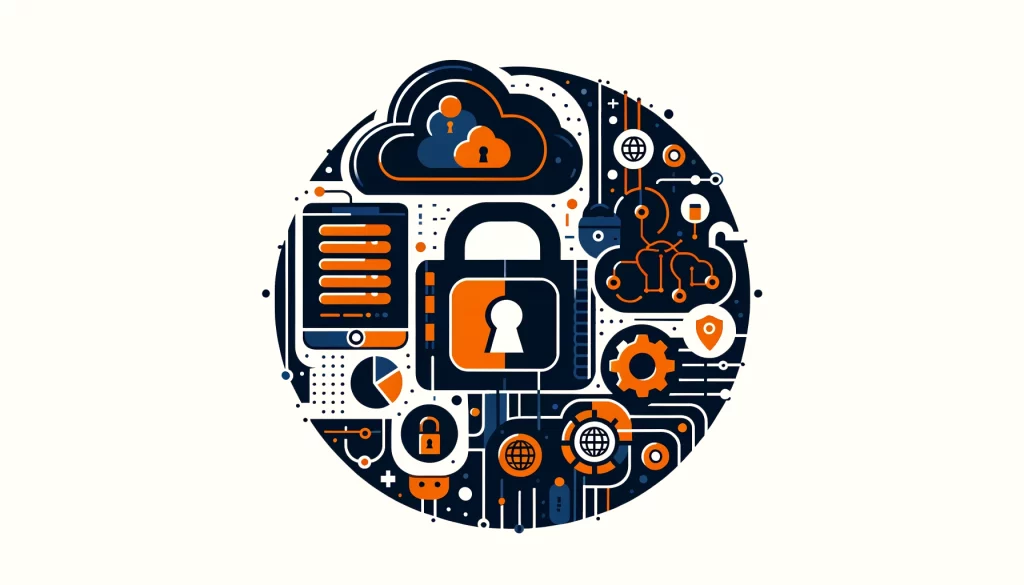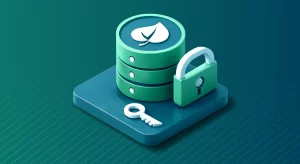
Enterprise Data Protection

Introduction
In the digital age, data has become the lifeblood of organizations, driving innovation and enabling unprecedented growth. However, with the exponential increase in data generation and storage, enterprises face significant challenges in protecting and governing their valuable data assets. This article will discuss Enterprise Data Protection.
The explanation will cover why it’s important, the types of data it includes, and the security issues it addresses. We will examine the top five challenges in Enterprise Data Protection and Governance that security and privacy leaders encounter. We will also explore ways to solve these challenges.
Understanding Enterprise Data Protection
Enterprise data protection is a comprehensive approach to safeguarding an organization’s data from unauthorized access, loss, or corruption. It involves implementing robust security measures, policies, and technologies to ensure the confidentiality, integrity, and availability of data throughout its lifecycle. Enterprise Data Protection aims to lower the chances of data breaches, theft, or misuse. These incidents can lead to financial losses, harm to reputation, and legal problems.
Sources of Data in Enterprise Data Protection
Data protection covers a wide range of data sources, including:
- Structured Data: This refers to data stored in databases, spreadsheets, and other structured formats. Examples include customer records, financial transactions, and inventory data.
- Unstructured Data: Unstructured data includes different types of files like documents, emails, images, and videos. Usually, different systems spread out this data, making it harder to keep safe.
- Cloud Data: As more organizations use cloud computing, they store and process data in public, private, or hybrid cloud infrastructures. This means that Enterprise Data Protection measures need to cover these environments.
- Mobile Data: The increase in mobile devices has caused a lot of data usage on smartphones, tablets, and laptops. This means we need special security measures for mobile devices.
Security Aspects of Enterprise Data Protection
To ensure comprehensive data safeguarding, enterprise data protection addresses several key security aspects:
- Access Control: To protect sensitive data, it is crucial to have strong access controls. Users should use multi-factor authentication. Regularly update access rights to prevent unauthorized access.
- Encryption: Protect data by encrypting it at rest and in transit with advanced encryption algorithms to prevent unauthorized access.
- Data Loss Prevention (DLP): DLP technologies protect data by detecting breaches, enforcing security rules, and alerting administrators to any problems.
- Backup and Recovery: Backing up data regularly is important. This ensures that the data is available in case of a disaster or system failure. It also allows for quick data restoration when needed.
- Incident Response: A clear incident response plan is important for dealing with data breaches or security issues. It explains how to stop the problem, determine why it happened, and make sure everything is safe again.
The Top 5 Enterprise Data Protection and Governance Challenges
Security and privacy leaders face numerous challenges in protecting and governing their vast data repositories. The five most common challenges include:
- The Impossible Scope of Data Protection and Governance: Data lakes and warehouses generate and use a lot of data. Managing this data requires a complete overhaul of data management. This is necessary to accommodate the massive scale of information.
- Lack of Visibility into Data Access and Usage: Access logs can be hard to understand. They come in different formats. They often lack important information. This makes it difficult to monitor and audit effectively.
- Loose Permissions and Access Controls: Finding the right balance between allowing broad data access for innovation and protecting data is a major challenge. Too many restrictions can limit the use of data.
- Bridging the Gap between Business Requirements and Technical Implementation: Converting business policies into technical implementations can be challenging and time-consuming. This process involves service users, tables, objects, rows, and columns.
- Attributing Data Access to Real Users: Using service users for data access tools makes it hard to track which employee is accessing data. This makes monitoring and auditing less effective.
Approaches to Address Enterprise Data Protection and Governance Challenges
To effectively tackle these challenges, organizations need solutions that adhere to certain design principles:
- Transparent Implementation: The solution should enable and optimize data operations without disrupting normal data access, making it easier, more efficient, and broader than before.
- User, Data, and Intent Context: Contextualizing data access with information about user identity, data type, and access intent is crucial for understanding what’s happening within data repositories.
- Continuous Visibility: Given the dynamic nature of data, continuous visibility and insights are essential to enhance controls and reduce risk over time.
- Business-Level Policies: The solution should simplify the process of setting rules for accessing important information. Teams can change and relocate data, making it possible.
- Data Operations Support: The solution should improve security, privacy, and compliance, and also help with managing data effectively. This includes identifying outdated data, improving access patterns for better performance, and offering insights into data usage.
Conclusion
Protecting enterprise data is crucial for businesses today. This is because there is more data than ever before. Managing and securing large data stores is becoming more complex. Businesses need to prioritize protecting their data.
Organizations can protect their valuable data assets by developing comprehensive strategies. This involves understanding the fundamentals of Enterprise Data Protection. It also includes knowing the sources of data it covers and the security aspects it deals with.
To successfully navigate data protection and governance, businesses should acknowledge the challenges faced by security and privacy leaders. Implementing solutions that adhere to important design principles is crucial. This will help businesses overcome shared obstacles in the realm of data protection and governance.
Organizations can reduce risks by focusing on data security. They can also keep customer trust and promote innovation. Clear, context-aware, and ongoing visibility solutions are key in a world that heavily relies on data.
If you are interested in enterprise data protection solutions, visit our online demo and discover how DataSunrise can help your organization achieve its data security and governance goals. Our knowledgeable team will be happy to walk you through the capabilities of DataSunrise’s tools and answer any questions you may have.
